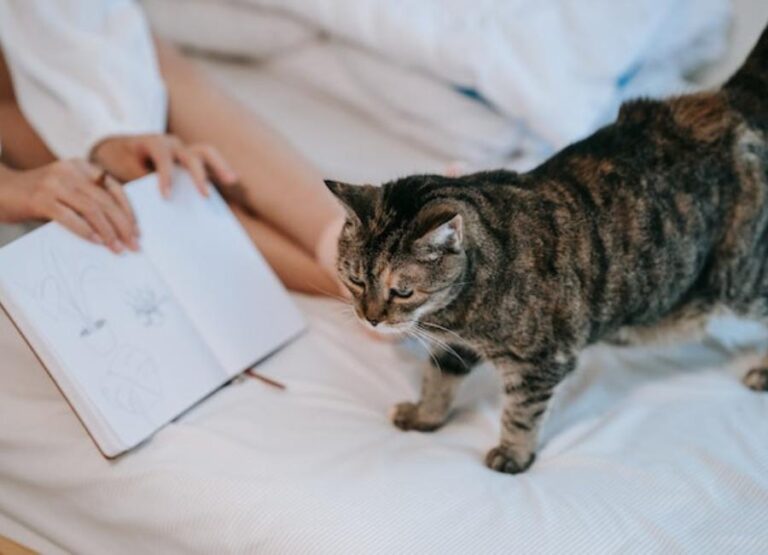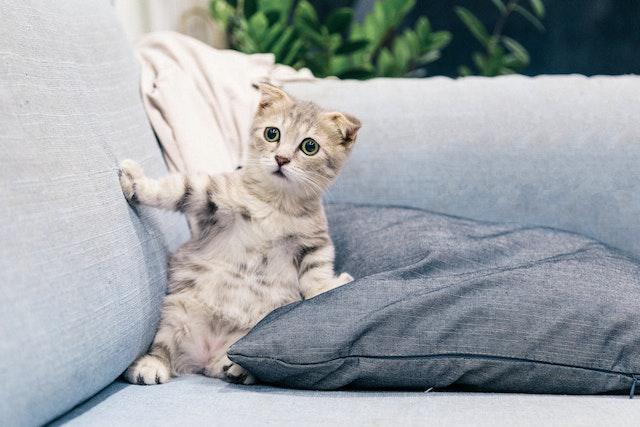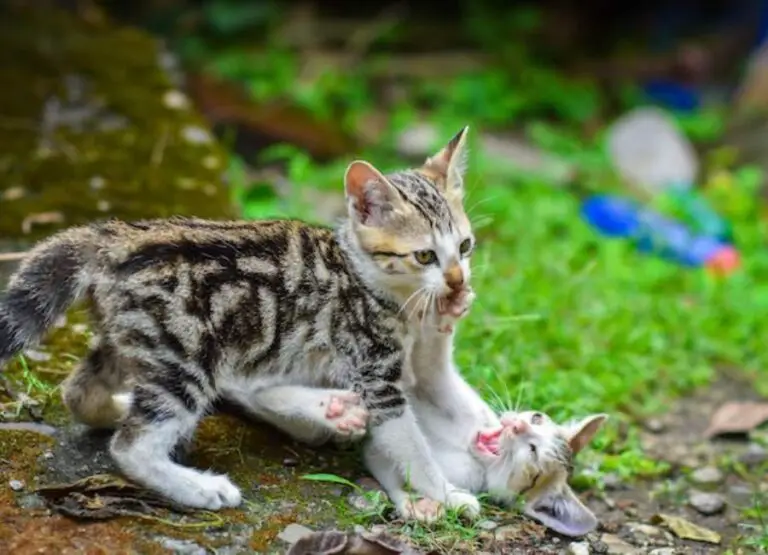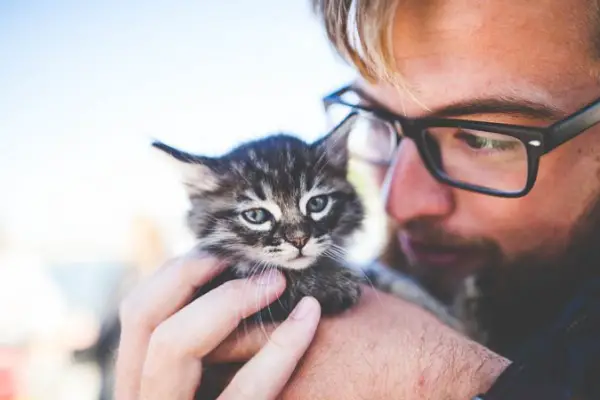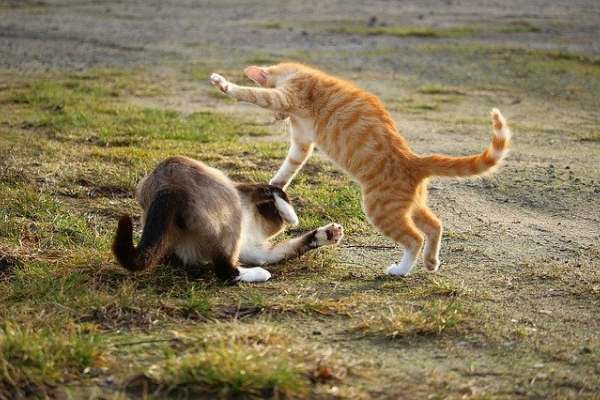How to Discipline a Bengal Cat: 13 Right & Wrong Ways

Bengal cats are always stubborn from kitten stages, so let’s look at how to discipline a Bengal cat that is not inhumane or against the law.
Bengal cats are very affectionate and lovely to live with, but sometimes they make life very difficult for their owners even with all your training efforts.
It is important you learn how to discipline your cat properly and understand the Bengal behavior problems.
Understanding the Bengal cat behavior problems is a simple way to knowing how and when to discipline your Bengal cat.
Bengal cats are not for everyone so don’t get a Bengal cat until you are sure you understand the breed requirements.
Before you discipline your Bengal cat you have to check if their behavior is a natural trait or bad behavior.
General guidelines for living with a Bengal cat
Here are some general guidelines for living with a Bengal cat to avoid unnecessary behaviors that may lead to discipline needs:
- Do not leave breakable objects or valuable items on top of shelves or tables.
- Completely set up furniture defenders around your furniture.
- Get a cord or wire protector to cover all your cables.
- Never leave food materials unguided for any reason.
- Only use trash bin that have good covers or lids
- Cover the soil in the base of plants around your home.
- Cover your cooking utensils, like the hot burner.
- Finally, cat-proof your home and train your Bengal cat not to enter every area in your home.
Let’s now talk about how to discipline a Bengal cat the proper way.
How to Discipline a Bengal Cat
Here are some proper ways to discipline your Bengal cat:
Use clickers to control your Bengal cat actions
Bengal cats listen to sounds a lot, and you can use this to your owner advantage by using clickers.
Training your Bengal cat with clickers is one of the best ways to discipline your Bengal cat at any point.
Teach your Bengal cat what every sound means, and see how well your Bengal cat will go.
Scientifically, clickers help reduce the lag time between the time your Bengal cat does what you want till the expected time your Bengal cat should have done such activities.
Use sounds to discipline your Bengal cat
Just like I pointed out, Bengal cats are sensitive to sounds and can associate it with something good or bad.
It’s your job to associate a particular sound or noise to good or bad behavior, and your Bengal cat takes it from there.
For example, shaking a loud can: If you notice your Bengal cat jumping on the countertops, or anywhere it shouldn’t be, shake a can filled with pennies to scare it.
If you are consistent over a short period, your Bengal cat will stop jumping on such countertops.
Train your Bengal cat to listen to your commands
This is the first thing you should do when trying to discipline your Bengal cat, or training your Bengal cat.
You need to develop a road map or check list of how your Bengal cat can listen to your commands.
This may be a sweet name, tone, sound, treats or whatever, the real deal here is that your Bengal cat can’t be disciplined if you don’t train them to listen to your commands.
Make sure you upgrade the bond between you and your Bengal cat before ever thinking of discipline.
It is much easier to discipline or correct a well bonded Bengal cat than to correct a Bengal cat that is afraid of you.
Make a stop word or stop sign for your Bengal cat
It is important to note that Bengal cats are not humans that can understand multiple word combinations.
To use the stop word, just make a stop sign or word like “NO” right in the act not after the act.
Make sure your Bengal cat understands the meaning of “NO” and also associate it with stop.
It’s very simple, don’t complicate things by combining long words because your Bengal may not understand when to stop or not.
If you keep using the word “NO” when needed, your Bengal will associate it with bad behavior and will learn to stop when you use it.
Use a firm voice tone to tell your Bengal to stop
Bengal cats are stubborn in nature due to their wild origins and using a soft tone to get them to stop won’t move them an inch.
Make sure you teach your Bengal cat to respond to different types of voice tone so that they know what each tone is associated with.
Therefore, when you want your Bengal to stop a particular activity, use the firm voice consistently.
Stop yelling at your Bengal cat unnecessarily
Bengal cats are great at hearing noises no matter how low the voice is, if you yell at your Bengal cat it will become threatened.
Feeling threatened leads to unnecessary aggressiveness, which is why some people say Bengal cats attack their owners a lot.
Yelling at your Bengal cat can only cause more bad behaviors, and it will affect the bonding with your Bengal.
Yelling at your Bengal cat will also make your cat not trust you again, which is very bad for the both of you.
Be consistent in disciplining your Bengal & corrections
Consistency is the key to disciplining your Bengal cat because over a short period your Bengal will associate some unwanted action with bad behaviors.
For example, one day you allow your Bengal to jump on the sink, and you didn’t stop your cat another day your cat jumps on the sink, and you try to stop it.
This will only make your Bengal be more confused and choose to do his wish, not yours.
So, if you want your Bengal not to jump on the sink, make sure you stop him each time and don’t break the chain until he associated jumping on the sink as bad behavior.
Correct your Bengal cat in the act and not after the act
When you come out from your room a meet your Bengal cat doing what you don’t want, stop him immediately and redirect his attention.
If you discipline your Bengal after the act or later in the day, your Bengal will never know what the problem is and what he did.
So, always discipline your cat when you caught him in the act and not after the whole event.
Don’t call or use your Bengal cat name when disciplining your Bengal
Never call or use your Bengal cat’s name when you want them to stop what the car doing because over time they will associate their name with something negative.
Be straightforward with the use of “STOP” or “NO” and not mix your cat name with stop or no, this is very bad.
Remove your Bengal cat from the activity and redirect
This is one of the most effective ways of disciplining your Bengal cat, right on the act be quick to perform a redirection action.
This redirection should aim at corrections, not negative reinforcement.
For example, you caught your Bengal scratching your furniture, don’t shout or beat your Bengal.
You should immediately get your Bengal, his favorite toy, and distract him down to the area where the scratch post is positioned.
Provide consistent obedience training for your Bengal cat
Providing enough obedience training and setting rules, limitations and boundaries helps put your Bengal cat in a discipline pathway.
Early socialization and obedience training are the most successful methods of disciplining a Bengal cat.
I believe your cat requires punishment since you ignored early socializing and obedience training.
Early obedience training ensures that you do not develop a large number of undesirable habits that will require discipline.
During obedience training, your Bengal cat will require the following three essential items:
- Rules
- Limitations
- Boundaries
To have a well-behaved Bengal cat, you must establish regulations from the kitten stage forward; if you do not, your Bengal cat will establish the rules for you.
If you’ve done your job correctly, your Bengal cat will follow the rules.
The following are some examples of rules:
- Stop
- Stay
- Eat
- Come
Your Bengal cat will know what to do at all times if you use these commands.
Also, from the beginning, set limits and boundaries for your Bengal cat.
Provide your Bengal cat with exercise once again, since bored Bengal cats may become needlessly territorial and violent.
Always keep in mind that Bengal cats are very lively, active, and spirited, so find a method to keep them entertained.
Use spray water bottle to keep your Bengal cat away
Some Bengal cat owners employ this approach; however, I do not recommend it, not because it is ineffective, but because I believe it may have bad consequences.
Spraying water in your Bengal face will cause your cat to stop and walk away, but it may have an impact on your connection with your cat.
Even though it is widely used, I do not endorse it; instead, I always urge for positive rather than negative reinforcement.
Use deterrents to keep your Bengal cat away from trouble
Citrus scents and commercially available sprays meant to keep cats away from particular locations are all deterrents for certain cats.
Special sprays with a foul taste are also available to keep Bengal cats from chewing on objects.
Related post:
Mistakes to avoid when disciplining your Bengal cat
Here are some mistakes to avoid when disciplining your Bengal cat:
Never toss your Bengal cat when you discipline them
Never, ever, ever toss your cat! It’s a heinous act that might leave them traumatized for the rest of their lives.
It can not only badly injure your cat, perhaps fracturing and immobilizing portions of their body, but it can also harm them emotionally.
It is critical to treat animals with the compassion and respect that they all deserve.
Locking up your Bengal cat in a room for and offense
This is one of the things most Bengal cat owners do and the end up complaining that Bengal cats are aggressive.
No, Bengal cats are not aggressive you are the one that is wrong not your cat if your Bengal is wrong correct him in the act, not after the act.
Locking up your Bengal cat for any offense will encourage more bad behaviors or even lead to a traumatic experience in cats.
Physically assaulting or beating your Bengal cat
It is inhumane to beat or physically assault your Bengal cat for any reason whatsoever, this will only increase bad behaviors.
You need to get one thing straight your cat can never get better by you beating them each time they go wrong.
Beating up your Bengal cat can only lead to more unnecessary behaviors like your cat biting or attacking you.
This can also force your Bengal cat to run away from home or become a stray cat who sleeps anywhere.
Forcing your Bengal cat to smell its poop or urine
This is as far as you can get with your Bengal cat, when things come down to a stage that you rub your Bengal poop on him, you are done.
Please, don’t try these because you will end with a Bengal cat that will run away from your home or even attack you.
People believe it works for your Bengal cat to smell its poop but as a cat owner I tell you is very wrong.
Always aim for positive reinforcement not negative reinforcement.
Never pull your Bengal cat’s tail
Pulling on your cat’s tail too forcefully might harm its nerves and spinal cord, resulting in rear leg weakness or paralysis.
Because their tail muscles govern urination and feces, it might cause renal difficulties, urine incontinence, and defecation disorders.
More interesting topics from the same author:
Summary of things you should never do to your Bengal cat
Here are things or punishment you should never give your Bengal cat for whatsoever reason;
- Never rub your Bengal cat mouth against its poop or urine.
- Never shout at your Bengal cat.
- Do not beat your Bengal cat.
- Do not pull your Bengal cat from its tail.
- Never hold your Bengal cat while driving.
- Never administer drugs to your Bengal cat without the notice of a vet.
- Do not forget to clean your cat water bowls.
- Check your cat litter box every day.
- Never leave your Bengal cat indoors unsupervised.
- Never toss your Bengal cat.
- Do not leave your Bengal cat in complete darkness.
How do you discipline a Bengal kitten?
Here are some steps to discipline a Bengal cat kitten:
- Train your Bengal kitten to listen to your commands
- Provide consistent obedience training for your Bengal kitten
- Make a stop word or stop sign for your Bengal kitten
- Use a firm voice tone to tell your Bengal kitten to stop
- Stop yelling at your Bengal kitten unnecessarily
- Remove your Bengal kitten from the activity
- Redirect your Bengal kitten in the act
- Correct your Bengal kitten in the act and not after the act
- Be consistent in disciplining your Bengal kitten
- Make corrections rather shouting

